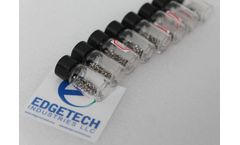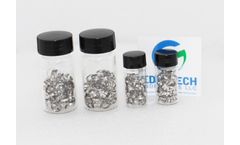Refine by
Implants Articles & Analysis: Older
221 articles found
I R Tubes Pvt Ltd, with its extensive portfolio, offers tailored solutions to meet the unique demands of the medical device sector, from diagnostic tools to implantable ...
Their durability and biocompatibility make them a popular choice for implantation. However, ensuring their safety is of utmost importance. As medical technology advances, the importance of using safe materials remains a top priority. ...
Anorexia, a condition characterized by a significant reduction in food intake despite negative energy balance, poses severe risks to health and quality of life. It manifests in various forms in humans, including anorexia nervosa and physiological anorexia. While psychological and social factors have been widely studied, the physiological causes remain less understood. For ground squirrels, ...
Customized Solutions: Ensuring Safety and Quality in Medical Implantation As medical implantation continues to advance, customized solutions have become increasingly important in ensuring the safety and quality of the procedures. ...
Posterolateral Rabbit Spinal Fusion Study I. Introduction Autologous bone has long been the gold standard for bone graft substitute in spinal fusion procedures. The limited supply and morbidity associated with using autologous graft material led to the development of alternative bone grafting materials. Bioactive glass has a long history of biomedical use and has been shown to facilitate mineral ...
Polyaryletherketones (PAEKs) These include PEEK, PEK, and PEKK, all known for their strength, heat resistance, and ability to maintain performance under stress. PAEKs are used in medical implants, aerospace components, and high-performance industrial parts. 4. ...
Moreover, it doesn’t matter how great your cell is, if you don’t deliver it with the right matrix with appropriate cell-friendly characteristics, cells will not likely survive after implantation (3). A 5cc sample of ACTIGEN™ Verified Inductive Bone Matrix was provided to a well known U.S. cell-concentration device manufacturer for the purpose of rehydrating ...
What is biofilm? Biofilms are defined as communities of micro-organisms attached to a surface, or one another, and encased within a matrix of extracellular polymeric substance (EPS). The EPS makes up the largest component of the biofilm, and in the biological environment is generally composed of polysaccharides, proteins, glycolipids, blood products, cellular debris, extracellular enzymes, metal ...
We usually choose the rabbit pyrogen test method. Implantation testingThis test evaluates the biocompatibility of medical devices that come into direct contact with living tissues other than the skin. ...
This synergistic integration of AI and advanced automation technologies can significantly accelerate the development of biomaterials with tailored surface characteristics, unlocking new possibilities in areas such as tissue engineering, implant design, and biosensing. The Future of AI-Driven Biomaterials Innovation As the field of biomaterials continues to evolve, the ...
Increased expression of MMPs is detected at different stages of mammalian development, from embryonic implantation to morphogenesis of different tissues and organs, including lung, bone and blood vessels. ...
Medical and Healthcare: The medical industry relies on silicone for a variety of applications, including medical devices, implants, and tubing. Its biocompatibility and resistance to bacteria make it suitable for sensitive medical environments. ...
From the development of eco-friendly detergents and leather processing agents to the creation of advanced biomaterials and biomedical implants, the versatility of this enzyme knows no bounds. With each new discovery, the future of keratinase-based technologies becomes increasingly bright, poised to reshape industries and contribute to a more sustainable, circular ...
The development of groundbreaking sleep apnea devices, including auto-adjusting pressure machines, bilevel positive airway pressure machines, continuous airway pressure machines, and implantable devices, makes it easier to treat patients with disruptive sleep issues. ...
PCL is widely utilized in applications such as tissue engineering, drug delivery systems, and surgical implants. Another biocompatible material gaining popularity in 3D printing is poly(lactic acid) (PLA). ...
Nano dressings also provide support for tissue engineered skin implants. Wounded skin often loses the epidermal layer that constitutes the mechanical barrier. ...
In biomedical engineering, hydrophobic polymers are used in the development of medical devices, implants, and drug delivery systems. Their water-repellent properties help prevent bacterial adhesion, ensuring the safety and efficacy of these devices. ...
What makes Nitinol even more fascinating is its ability to "remember" its shape, which can be programmed and modified for endless applications ranging from medical implants to aerospace engineering. Without a doubt, Nitinol is a game-changer in the world of materials science, paving the way for innovations beyond our wildest imaginations. ...
They are composed of two integral components: an outer shell, surgically implanted in the pelvis, and an inner mobile component, inserted snugly into the outer shell. ...
The experimental setup of the cardiopulmonary portion involved the implantation of emka easyTEL-S-ETA telemetry sensors for electrocardiography (ECG) recordings, enabling the monitoring of heart rate in freely moving mice expressing ChR2 (a light-sensitive protein) in the PPN or vlPAG (ventrolateral periaqueductal gray). emka & SCIREQ whole-body plethysmography (WBP), ...

















